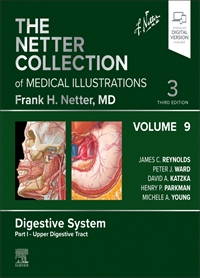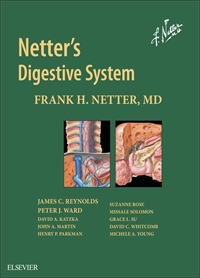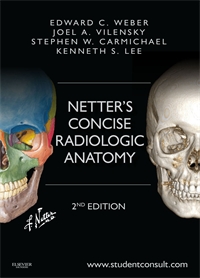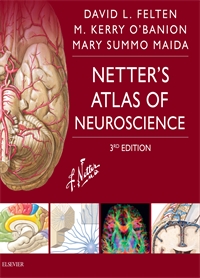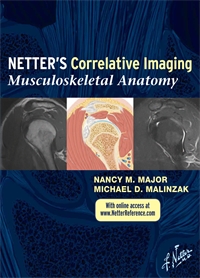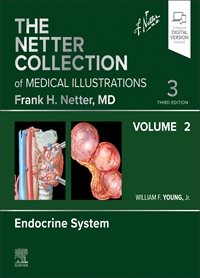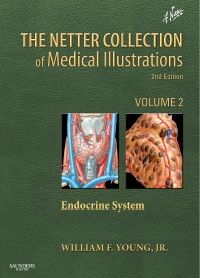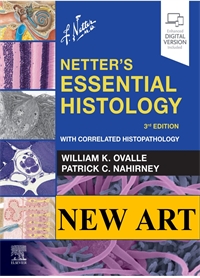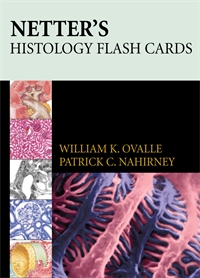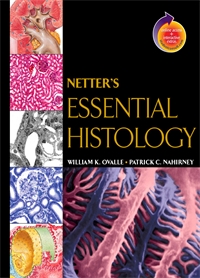Williams Textbook of Endocrinology
Author: Henry M. Kronenberg; Shlomo Memed; Kenneth S. Polonsky; P. Reed Larsen
ISBN: 9781416029113
- Page 19: Different Modes of Utilization of Polypeptide Hormones in Expression of Their Biologic Actions
- Page 20: Steps in the Cellular Synthesis of Polypeptide Hormones
- Page 20: Diagrammatic Depiction of Two Configurations of Precursors of Polypeptide Hormones
- Page 21: Diagrammatic Illustration of Primary Structures of Several Prohormones
- Page 23: Diagram Depicting Cellular Events in Initial Stages of Synthesis of a Polypeptide Hormone According to the Signal Hypothesis
- Page 24: Regulatory Feedback Loops of the Hypothalamic-Pituitary-Target Organ Axis
- Page 26: Diagrammatic Structure of a &Quot;Consensus&Quot; Gene Encoding a Prototypical Polypeptide Hormone
- Page 27: Diagram of the Pancreatic Glucagon Gene and Its Encoded Messenger RNA (Mrna)
- Page 27: Diagram of An Endocrine Cell Showing Potential Control Points for Regulation of Gene Expression in Hormone Production
- Page 29: Diagram Showing Three Cell-Surface Receptor-Coupled Signal Transduction Pathways Involved in the Activation of a Superfamily of Nuclear Transcription Factors
- Page 30: Schema Indicating Levels in Expression of Genetic Information at Which Diversification of Information Encoded in a Gene May Take Place
- Page 32: Alternative Exon Splicing Provides a Means to Generate Biologic Diversification of Gene Expression
- Page 33: Alternative Translational Initiation Sites Are Used to Change the Coding Sequences of Messenger Ribonucleic Acids to Encode Different Protein Isoforms
- Page 40: Signal Transduction by Hormones and Other Ligands That Act Via Nuclear Receptors
- Page 40: Domain Structure of Nuclear Receptors
- Page 41: Structural Basis of Nuclear Receptor Ligand Binding and Cofactor Recruitment
- Page 42: Structural Basis of Nuclear Receptor (NR) DNA-Binding Specificity
- Page 44: Coactivators and Corepressors in Transcriptional Regulation by Nuclear Receptors
- Page 44: Repression and Activation Functions Augmenting the Dynamic Range of Transcriptional Regulation by Nuclear Receptors
- Page 49: Receptor Tyrosine Kinases
- Page 50: Ligand-Induced Dimerization of Receptors
- Page 50: Phosphorylation of Tyrosine Residues in the Activation Loop Leads to Activation of the Insulin Receptor Tyrosine Kinase
- Page 52: Simplified Model of Signaling Pathways Downstream From the Insulin Receptor
- Page 54: Mutations Leading to Constitutive Activation of Ret. &Quot;Wild-Type&Quot;
- Page 55: Mechanism of Action of Receptor Serine Kinases
- Page 56: Cytokine Receptors Are Composed of Multiple Subunits and Bind to One Or More Members of the Janus Kinase (JAK) Family of Tyrosine Kinases
- Page 58: The G Protein-Coupled Receptor (GPCR) Superfamily
- Page 59: The G Protein Guanosine Triphosphatase (Gtpase) and G Protein-Coupled Receptor (GPCR) Desensitization-Resensitization Cycle
- Page 68: Six-Logarithm Range of Normal Concentrations for the Plasma Concentrations of Endocrine Tests
- Page 69: Principles of Competitive Binding Assays. B, Typical Dose-Response Curve
- Page 70: Comparison of An Immunologic Technique for Measuring Hormone Concentration Versus a Receptor Technique for Measuring Hormone Activity
- Page 71: Principles of Immunometric Assays
- Page 71: Immunometric &Quot;High-Dose Hook Effect.&Quot;
- Page 72: Assay Interferences Caused by Heterophile Antibodies, Which Result in Either False High Or False Low Results
- Page 74: Basic Components of Quadrupole Mass Spectrometer.
- Page 78: Effect of Analytic Bias, Or Shift, On the Number of Patients With Elevated Levels of Thyrotropin (TSH)
- Page 79: Nonproportional Dilutions
- Page 87: Three Types of Hypothalamic Neurosecretory Cells
- Page 103: Regulation of the Hypothalamic-Pituitary-Thyroid Axis
- Page 107: Sequence Comparison of Members of the Corticotropin-Releasing Hormone (CRH) Peptide Family
- Page 114: Regulation of the Hypothalamic-Pituitary-Adrenal Axis
- Page 118: Regulation of the Hypothalamic-Pituitary-Growth Hormone (GH) Axis
- Page 120: Neural Pathways Involved in Growth Hormone (GH) Regulation
- Page 126: Regulation of the Hypothalamic-Pituitary-Prolactin (PRL) Axis
- Page 132: Regulation of the Hypothalamic-Pituitary-Gonadal Axis
- Page 134: Diagrammatic Representation of Changes in Plasma Levels of Estradiol, Progesterone, Luteinizing Hormone (LH), and Follicle-Stimulating Hormone (FSH), and of Portal Levels of Gonadotropin-Releasing Hormone (Gnrh) Over the Human Menstrual Cycle
- Page 160: Magnetic Resonance Coronal Section of a Normal Pituitary Gland
- Page 175: Threshold Field Test Showing Bitemporal Hernianopia in a Patient With a Pituitary Tumor Compressing the Optic Chiasm and Superior Bitemporal Field Cuts
- Page 177: Transsphenoidal Resection of Pituitary Adenoma
- Page 190: Prolactinoma Management
- Page 197: Management of Nonfunctioning Pituitary Adenomas
- Page 208: Management of Adult Somatotropin Deficiency
- Page 234: Management of Thyroid-Stimulating Hormone (TSH)-Secreting Pituitary Tumors
- Page 300: Structure of Thyroid Hormone and Related Compounds
- Page 310: Schematic Diagram of the Origin of the Specifically Bound Nuclear T3 in Various Rat Tissues
- Page 310: Comparison of the Chemical Structure of Thyroxine With Those of Two Agents That Block the Deiodination of the Iodothyronines
- Page 311: Schematic Diagram of Thyroid Hormone Activation and Inactivation in a Cell Expressing D2 and D3
- Page 312: Role of T4 and T3 in the Feedback Regulation of TRH and TSH Secretion
- Page 315: Newborn Infant With Iodide-Induced Goiter Due to Lugol's Solution Treatment of the Mother During the Third Trimester
- Page 321: Pattern of Changes in Total Serum T4 Concentrations and the Thyroid Hormone-Binding Ratio (THBR) in Euthyroid Patients With Alterations in the Circulating Concentrations of Thyroxine-Binding Globulin (TBG)
- Page 321: Pattern of Changes in Total Serum T4 Concentration and Thyroid Hormone Binding Ratio (THBR) in Patients With Hyperthyroidism Or Hypothyroidism With Normal Serum Thyroxine-Binding Globulin (TBG) Concentration
- Page 338: Algorithm for Determining the Cause of Thyrotropin-Independent Thyrotoxicosis
- Page 339: Schematic Diagram of Thyroid Cell Stimulation and Blockade by Antibodies to the Thyrotropin-Stimulating Hormone Receptor
- Page 341: An Overview of the Most Likely Mechanisms Involved in the Cause And/Or Precipitation of Graves″ Disease
- Page 342: Photomicrograph of Graves″ Thyroid Tissue Stained for HLA Class II (DR) Antigen Expression Using the Immunoperoxidase Technique
- Page 357: Comparisons of the Amount (A) and Sources (B) of T3 in Euthyroid Individuals With Those in Patients With Severe Hyperthyroidism Due to Graves″ Disease
- Page 379: Typical Appearance With Moderately Severe Primary Hypothyroidism Or Myxedema
- Page 379: Chest Roentgenograms in a Patient With Myxedema Heart Disease
- Page 387: Strategy for the Laboratory Evaluation of Patients With Suspected Hypothyroidism
- Page 388: Possible Involvement of Fas-Fas L in the Apoptosis of Hashimoto's Thyroiditis
- Page 417: Conventional and Color Flow Doppler Sonography.
- Page 417: Conventional and Color Flow Doppler Sonography.
- Page 422: Genetic Events in Thyroid Tumorigenesis. Activating Point Mutations of the RAS Genes Are Found With a High Frequency in Both Follicular Adenomas and Follicular Carcinomas, and Are Considered An Early Event in Follicular Tumorigenesis
- Page 424: Distribution of Pathologic Tumor-Node-Metastases (Ptnm) Stages in 2284 Patients With Papillary Thyroid Carcinoma, 218 Patients With Medullary Thyroid Cancer, 141 Patients With Follicular Thyroid Cancer, and 125 Patients With HÜRthle Cell Cancer Undergoing Primary Surgical Treatment at the Mayo Clinic From 1940 to 1997
- Page 424: Cause-Specific Survival According to Pathologic Tumor-Node-Metastases (Ptnm) Stage in a Cohort of 2284 Patients With Papillary Thyroid Carcinoma Treated at the Mayo Clinic From 1940 to 1997
- Page 424: Development of Neck Nodal Metastases, Local Recurrences, and Distant Metastases in the First 20 Years After Definitive Surgery for Papillary Thyroid Cancer (PTC) Or Medullary Thyroid Cancer (MTC) Performed at the Mayo Clinic From 1940 to 1997
- Page 424: Development of Neck Nodal Metastases (NM), Local Recurrences (LR), and Distant Metastases (DM) in the First 20 Years After Definitive Surgery for Follicular Thyroid Cancer (FTC) Or HÜRthle Cell Cancer (HCC) Performed at the Mayo Clinic From 1940 to 1997
- Page 425: Cumulative Cause-Specific Mortality Rates for Patients With Differentiated Thyroid Carcinoma in the First 25 Years After Treatment With Initial Surgery Performed at the Mayo Clinic From 1940 to 1997
- Page 425: Survival to Death From All Causes and to Death From Thyroid Cancer (Cause-Specific Mortality) in 2284 Consecutive Patients With Papillary Thyroid Carcinoma Undergoing Initial Management at the Mayo Clinic From 1940 to 1997
- Page 425: Lack of Influence of Nodal Metastases at Initial Operation On Cumulative Mortality From Papillary Thyroid Carcinoma in 1941 Patients With Pt1-3 Intrathyroidal Tumors (Completely Confined to the Thyroid Gland) and 209 Pt4 Patients With Extrathyroidal (Locally Invasive) Tumors
- Page 426: Cumulative Mortality From Papillary Thyroid Carcinoma in Patients at Either Minimal Risk Or Higher Risk of Cancer-Related Death as Defined by International Union Against Cancer (UICC) Pathologic Tumor-Node-Metastases (Ptnm) Stages, AGES Scores, AMES Risk Groups, and MACIS Scores
- Page 426: Cause-Specific Survival According to MACIS (MEtastases, AGe, COmpleteness of Resection, INvasion, and SIze) Scores of Less Than 6, 6 to 6.99, 7 to 7.99, and 8+ in a Cohort of 2284 Consecutive Patients With Papillary Thyroid Carcinoma (PTC) Undergoing Initial Treatment at the Mayo Clinic From 1940 to 1997
- Page 427: Postoperative Recurrence (Any Site) in the First 20 Years After Definitive Surgery for Differentiated Thyroid Carcinoma Performed at the Mayo Clinic From 1940 to 1997
- Page 428: Cause-Specific Survival According to Pathologic Tumor-Node-Metastases (Ptnm) Stages in a Cohort of 141 Patients With Follicular Thyroid Carcinoma (Left Panel) and 125 Patients With HÜRthle Cell Carcinoma (Right Panel) Treated at the Mayo Clinic From 1940 to 1997
- Page 428: Survival to Death From All Causes in 141 Consecutive Patients With Follicular Thyroid Carcinoma and 125 Patients With HÜRthle Cell Cancer Undergoing Initial Management at the Mayo Clinic From 1940 to 1997
- Page 430: Cause-Specific Survival According to Pathologic Tumor-Node-Metastases (Ptnm) Stage in a Cohort of 218 Patients With Medullary Thyroid Carcinoma Treated at the Mayo Clinic From 1940 to 1997
- Page 435: Asymptomatic 34-Year-Old Patient Who Underwent Surgery for a Papillary Thyroid Carcinoma. Results of the Chest Radiograph Were Normal
- Page 436: The Patient Was Being Monitored for a Papillary Thyroid Carcinoma Treated by Total Thyroidectomy and Postoperative Radioiodine
- Page 447: Schematic Diagram of the Structure of the Human Adrenal Cortex, Depicting the Outer Zona Glomerulosa and Inner Zona Fasciculata and Zona Reticularis.
- Page 448: The Cyclopentanoperhydrophenanthrene Structure of Corticosteroid Hormones, Highlighting the Structure of Some Endogenous Steroid Hormones Together With Their Nomenclature
- Page 449: Adrenal Steroidogenesis
- Page 449: Electron Shuttle System for the Mitochondrial Enzymes, CYP11A1 and CYP11B1
- Page 450: Synthesis and Cleavage of Pro-Opiomelanocortin (POMC) Within the Human Anterior Pituitary Gland
- Page 451: Normal Regulation of Adrenal Glucocorticoid Secretion
- Page 451: Circadian and Pulsatile Secretion of Adrenocorticotropic Hormone (ACTH) and Cortisol in a Normal Subject and in a Patient With Cushing's Disease
- Page 453: Schematic Structure of the Human Genes Encoding the Glucocorticoid Receptor (GR) and Mineralocorticoid Receptor (MR)
- Page 455: The Antiinflammatory Action of Glucocorticoids
- Page 455: Mineralocorticoid Hormone Action
- Page 456: The Principal Pathways of Cortisol Metabolism
- Page 457: The Principal Sites of Action of Glucocorticoids in Humans Highlighting Some of the Consequences of Glucocorticoid Excess
- Page 459: Structures of the Natural Glucocorticoid Cortisol, Some of the More Commonly Prescribed Synthetic Glucocorticoids, and the Mineralocorticoid Fludrocortisone
- Page 462: Clinical Features of Cushing's Syndrome
- Page 472: Investigation of a Patient With Suspected Cushing's Syndrome
- Page 473: Magnetic Resonance Imaging (MRI) Scan of Pituitary Demonstrating the Typical Appearance of a Pituitary Microadenoma
- Page 474: Cushing's Syndrome
- Page 476: A Young Woman With Cushing's Disease, Photographed Initially Beside Her Identical Twin Sister
- Page 477: Gradual Recovery of Function of the Hypothalamic-Pituitary-Adrenal Axis After Removal of a Pituitary Adrenocorticotropic Hormone-Secreting Microadenoma
- Page 486: Congenital Adrenal Hyperplasia Related to 21-Hydroxylase Deficiency
- Page 487: Genotype-Phenotype Correlation in 21-Hydroxylase Deficiency
- Page 489: Congenital Adrenal Hyperplasia Related to 11Β-Hydroxylase Deficiency
- Page 490: Congenital Adrenal Hyperplasia Related to 17-Hydroxylase Deficiency
- Page 492: Congenital Adrenal Hyperplasia Related to 3Β-Hydroxy–Steroid Dehydrogenase (3Β-HSD) Deficiency Resulting in Cortisol Deficiency and Variable Mineralocorticoid Deficiency
- Page 495: Adrenal Incidentaloma Discovered in a Woman Undergoing Investigation for Abdominal Pain
- Page 510: A Computed Tomographic (CT) Scan of the Abdomen With Intravenous Contrast Agent of a 71-Year-Old Man With An Incidentally Discovered Right Adrenal Mass
- Page 517: Magnetic Resonance Images of the Abdomen of a 34-Year-Old Woman With a Recent Onset of Palpitations and Hypertension
- Page 518: Computed Tomography (CT) and 123I-Metaiodobenzylguanidine (123I-MIBG) Imaging of a 44-Year-Old Man
- Page 518: Computed Tomography (CT) and 123I-Metaiodobenzylguanidine (123I-MIBG) Imaging of a 44-Year-Old Man
- Page 518: Computed Tomography (CT) and 123I-Metaiodobenzylguanidine (123I-MIBG) Imaging of a 44-Year-Old Man
- Page 522: Components of the Renin-Angiotensin System
- Page 525: When to Consider Testing for Primary Aldosteronism and Use of the Plasma Aldosterone Concentration-To-Plasma Renin Activity Ratio as a Case-Finding Tool
- Page 528: A 43-Year-Old Woman Had a 2-Year History of Hypertension and Hypokalemia
- Page 528: A 43-Year-Old Woman Had a 2-Year History of Hypertension and Hypokalemia
- Page 542: Changes in the Ovarian Follicle, Endometrial Thickness, and Serum Hormone Levels During a 28-Day Menstrual Cycle
- Page 542: Endocrine Interactions in the Female Reproductive Axis
- Page 544: Regulation of Gonadotropin-Releasing Hormone (Gnrh), Luteinizing Hormone (LH), and Follicle-Stimulating Hormone (FSH) Secretion
- Page 550: Meiotic Cell Division
- Page 554: Ovulation of the Cumulus-Oocyte Complex Through the Stigma
- Page 558: Steroidogenic Pathway in the Ovary
- Page 559: Two-Cell Hypothesis for Ovarian Steroidogenesis
- Page 562: Estrogen Biosynthesis in Women
- Page 565: Critical Epithelial Effects of Estrogen (E.G., DNA Synthesis, Proliferation, and Gene Expression) Are Mediated Primarily by Estrogen Receptor Α (ER) in Stromal Cells in a Paracrine Manner in the Endometrium
- Page 573: Severe Clitoromegaly Resulting From a Testosterone-Secreting Ovarian Tumor
- Page 574: Androgen Biosynthesis in Women
- Page 583: Pathologic Mechanisms in Polycystic Ovary Syndrome (PCOS)
- Page 584: Extraovarian Conversion of Androstenedione to Androgen and Estrogen
- Page 598: Tissue Sources of Estrogen in Postmenopausal Breast Cancer
- Page 603: Regimens of Hormone Replacement Therapy
- Page 647: Binding of Circulating Testosterone to Plasma Proteins in Men and Women
- Page 648: Testosterone as a Prohormone
- Page 650: A Schematic Representation of Germ Cell Development During Human Spermatogenesis
- Page 652: The Biochemical Pathways That Link Energy Homeostasis and Central Control of Reproduction
- Page 659: Ancel Keys With One of the Volunteers in His Study
- Page 661: Further Evaluation of Men Deemed Androgen Deficient
- Page 671: Evaluation of a Patient With Gynecomastia
- Page 675: Evaluation of An Infertile Couple
- Page 676: Evaluation of An Infertile Man With Abnormal Sperm Count and Morphology
- Page 676: Evaluation of Azoospermic Men With Normal Follicle-Stimulating Hormone (FSH), Luteinizing Hormone (LH), and Testosterone (T) Levels
- Page 702: Four Phases of the Human Sexual Response Cycle as Postulated by Masters and Johnson
- Page 710: An Algorithmic Approach to the Treatment of Erectile Dysfunction in Men
- Page 718: Sexual Response Cycle Reflecting the Many Reasons Women Are Motivated to Be Sexual, Subjective Arousal and Excitement in Response to Stimuli So That (Responsive) Desire May Be Triggered.
- Page 719: Revised Definitions of Women's Sexual Dysfunctions.
- Page 719: Diagnosis of Sexual Arousal Disorders
- Page 722: Overlap and Complexity of Womens Sexual Dysfunctions
- Page 756: Placental Neutralization of Biologic Activity of Several Potent Hormones During Maternal-Fetal Transfer
- Page 757: Illustration of the Homeobox Genes Programming Hypothalamic and Pituitary Embryogenesis and Function
- Page 759: Hemi-Cross-Section of a 5-Week Human Embryo With Location of the Adrenal Primordia (Suprarenal Cortices) and Gonadal Ridges
- Page 761: Illustration of the Homeobox Genes Programming Development of the Thyroid and Parathyroid Glands
- Page 764: Summary of the Molecular and Cellular Events of Gonadal Differentiation
- Page 768: Proposed Actions of Parathyroid Hormone (PTH), PTH-Related Protein (Pthrp), and Calcitonin (CT) in the Fetus
- Page 773: Actions of Cortisol and Catecholamines During Fetal Adaptation to the Extrauterine Environment
- Page 776: The Extensive Networks Linking Maternal-Placental-Fetal Endocrine Interactions Facilitating Fetal Endocrine Programming During the Critical Periods of Fetal Development
- Page 784: Events Temporally Related to Sex Differentiation in the Male Fetus
- Page 785: Dividing Sex Development Into Three Major Components Can Provide a Useful Framework for Diagnosis and Classification
- Page 787: Types of Cell Division
- Page 787: Schematic Diagrams of the X Chromosome and Y Chromosome Showing Key Regions and Genes Involved in Sex Development and Reproduction
- Page 789: Overview of the Major Events Involved in Sex Determination and Sex Differentiation
- Page 795: Schematic Diagram of the Steroid Biosynthetic Pathways Leading to Androgen Production in the Testis
- Page 795: Embryonic Differentiation of Female and Male Genital Ducts From Wolffian and MÜLlerian Primordial, Prior to Descent of the Testes Into the Scrotum
- Page 799: Development of the Hypothalamic-Gonadotrope Axis in Humans
- Page 800: Overview of Typical Postnatal Changes in Testosterone, AMH, and Inhibin B in Normal Males From Birth to Adulthood
- Page 810: Human SRY and SOX9 Protein and Reported Mutations
- Page 813: Diagram of the Seven Transmembrane Domain LH/Hcg Receptor With Selected Inactivating Mutations
- Page 815: Diagram of Selected Mutations Identified in the Star Gene Associated With Lipoid Congenital Adrenal Hyperplasia
- Page 816: Diagram of the 3Β-Hydroxysteroid Dehydrogenase Type 2 (HSD3B2) Gene Depicting the Mutations That Result in 3Β-HSD Deficiency
- Page 817: Diagram of Selected Mutations in the CYP17 Gene (17Α-Hydroxylase/17,20-Lyase Deficiency)
- Page 819: Diagram of the 17Β-Hydroxysteroid Dehydrogenase Type 3 (HSD17B3) Gene Depicting the Mutations That Result in 17Β-HSD Deficiency
- Page 821: Schematic Diagram of the Androgen Receptor Showing the Major Functional Domains and Subsidiary Functions
- Page 825: Frequency of Androgen Receptor (AR) Gene Mutation Recorded On the Cambridge DSD Database, Related to Phenotype
- Page 828: X-Linked Inheritance Pattern in a Family With CAIS Due to a Missense Mutation in the Ligand-Binding Domain of the Androgen Receptor (AR)
- Page 831: Prader Classification of the Degree of Androgenization in a Female With CAH.
- Page 832: Diagram of the CYP21 Gene and Locations of the Mutations That Cause More Than 90% of Cases of 21-Hydroxylase Deficiency
- Page 833: Diagram of the CYP11B1 Gene and Locations of the Mutations Causing 11Β-Hydroxylase Deficiency
- Page 837: Prader Staging for Score and External Masculinization Score (EMS)
- Page 851: Technique for Measuring Erect Height Using the Harpenden Stadiometer With Direct Digital Display of Height
- Page 852: Length-For-Age and Weight-For-Age Percentiles for Boys (Birth to 36 Months)
- Page 852: Head Circumference-For-Age and Weight-For-Length Percentiles for Boys (Birth to 36 Months)
- Page 853: Length-For-Age and Weight-For-Age Percentiles for Girls (Birth to 36 Months)
- Page 853: Head Circumference-For-Age and Weight-For-Length Percentiles for Girls
- Page 854: Stature-For-Age and Weight-For-Age Percentiles
- Page 854: Stature-For-Age and Weight-For-Age Percentiles
- Page 855: Body Mass Index-For-Age Percentiles for Boys (2 to 20 Years)
- Page 855: Body Mass Index-For-Age Percentiles for Girls (2 to 20 Years)
- Page 861: Levels of Growth Hormone (GH) and Growth Hormone-Binding Protein (GHBP) Measured in Normal Pubertal Boys Throughout Adolescence
- Page 865: Structure of the IGF-I Gene
- Page 876: Theoretical Mechanisms of Cellular IGFBP Actions.
- Page 877: Schematic Diagram of IGF-Dependent and IGF-Independent Actions of IGFBP-3, the Latter Being Mediated Through a Putative Membrane-Associated IGFBP-3 Receptor
- Page 891: Growth Curves of Two Boys With Obesity
- Page 910: Clinical and Biochemical Evaluation of Growth Failure: Seeking the Diagnosis of IGF Deficiency Syndrome
- Page 920: Algorithm for Transition to Adult Treatment of Growth Hormone Deficiency
- Page 986: High-Resolution Pelvic Ultrasonography
- Page 990: Interactions of the Major Growth-Promoting Hormones During Puberty
- Page 992: Serum Insulin-Like Growth Factor I (IGF-I; Also Called Somatomedin C, SMC) in Females and Males Stratified by Age and by Pubertal Stage
- Page 1018: The Postulated Action of Leptin Secreted by Adipocytes On the Hypothalamic Luteinizing Hormone-Releasing Hormone (Gnrh) Pulse Generator
- Page 1025: Hypothalamic Hamartoma as An Ectopic Luteinizing Hormone-Releasing Hormone (Gnrh) Pulse Generator That Escapes the Intrinsic Central Nervous System Inhibitory Mechanism and Results in True Precocious Puberty
- Page 1028: The Yin and the Yang of the Neuroendocrinology of the Prepubertal Juvenile Pause and Its Intrinsic Central Inhibition of the Luteinizing Hormone-Releasing Hormone (Gnrh) Pulse Generator and the Reversal of This Inhibition and Termination of the Juvenile Pause, Which Leads to the Onset of Puberty
- Page 1033: Adrenarche and the Zona Reticularis
- Page 1038: Craniopharyngioma in a Short 5-Year-Old Girl With a History of Frontal Headaches, Impaired Vision, and Poor Growth
- Page 1043: Comparison of the Brain and Nasal Cavities of a Normal 19-Week-Old Male Fetus and Those of a Male Fetus of Similar Age With Kallmanns Syndrome Caused by An X Chromosome Deletion at Xp22.3
- Page 1056: Gonadal Dysgenesis (Turner's Syndrome)
- Page 1062: The Evaluation of Delayed Puberty in Boys
- Page 1063: The Evaluation of Delayed Puberty in Girls
- Page 1074: True Precocious Puberty
- Page 1074: Pulsatile Luteinizing Hormone (LH) Secretion Before and During Gnrh Agonist Therapy in a Boy and a Girl With True Precocious Puberty Secondary to a Hypothalamic Hamartoma
- Page 1086: Familial Testotoxicosis
- Page 1090: Luteinizing Hormone-Releasing Hormone (Gnrh)-Independent Sexual Precocity Associated With Mccune-Albright Syndrome
- Page 1092: Bone Lesions in Mccune-Albright Syndrome
- Page 1096: Hashimoto's Thyroiditis
- Page 1100: The Diagnosis of Sexual Precocity in Girls.
- Page 1101: The Evaluation of Pubic Hair in Normal Phenotypic Girls Before 7 Years.
- Page 1102: The Diagnosis of Sexual Precocity in a Phenotypic Male.
- Page 1204: Distribution and Function of Calcium and Phosphate
- Page 1204: Parathyroid Hormone-Calcium Feedback Loop That Controls Calcium Homeostasis
- Page 1205: Sequences of Pre-Proparathyroid Hormone From Six Species
- Page 1205: Intracellular Processing of Pre-Proparathyroid Hormone (Pre-Pro-PTH)
- Page 1210: Osteoblast Lineage
- Page 1211: Stromal Cell Control of Osteoclastogenesis and Osteoclast Activity
- Page 1211: Parathyroid Hormone (PTH)/PTH-Related Protein (Pthrp) Receptors Act as Nucleotide Exchangers
- Page 1212: Network of Parathyroid Hormone (PTH) Ligands and Receptors (R)
- Page 1214: Sequences of Parathyroid Hormone-Related Protein (Pthrp) From Five Species
- Page 1215: The Amino Acid Sequences of Calcitonin (CT), Calcitonin Gene-Related Peptide (CGRP), Amylin, Adrenomedullin (ADM), Intermedin (IDM), and Calcitonin Receptor-Stimulating Proteins (CSRP) From Selected Species
- Page 1218: Vitamin D Precursors and Alternative Reaction Products
- Page 1219: Transcriptional Activation by 1,25-Dihydroxyvitamin D3 [1,25(OH)2D3]
- Page 1222: Homeostatic Responses to Variations in Dietary Calcium Content
- Page 1238: Approach to the Management of the Hypercalcemic Patient
- Page 1239: Approach to the Management of the Hypercalcemic Patient With Parathyroid Hormone-Dependent Hypercalcemia
- Page 1244: Daughter and Mother With Pseudohypoparathyroidism and Albright's Hereditary Osteodystrophy
- Page 1244: Radiograph of Hand From a Patient With Pseudohypoparathyroidism and Albright's Hereditary Osteodystrophy
- Page 1245: The GNAS Locus and Adjacent Stx16 Locus
- Page 1274: Osteoclast Formation
- Page 1288: Diagnosis and Management of Osteoporosis
- Page 1314: Genetic Hypercalciuric Stone-Forming (GHS) Rats
- Page 1316: Evaluation of Stone Formers
- Page 1321: Treatment of the Patient With Recurrent Calcium Oxalate Stones
- Page 1331: American Diabetes Association Consensus
- Page 1338: Simplified Schematic Diagram Demonstrating Fatty Acid (FA) Uptake, Activation (Formation of FA-Coenzyme a [Coa]), and Intracellular Transport to Different Organelles Within a Muscle Cell
- Page 1338: Glucose Effect On Triglyceride Metabolism
- Page 1344: Insulin Resistance and Dyslipidemia
- Page 1345: Insulin Suppresses Hepatic Glucose Production by Direct and Indirect Mechanisms
- Page 1354: Mean (&Plusmn;&Bull;&Bull; [Standard Error of the Mean]) Rates of Insulin Secretion in Type 2 Diabetic Patients Compared With Control Subjects
- Page 1370: Treatment Algorithm for Type 2 Diabetes
- Page 1423: Aldose Reductase and the Polyol Pathway
- Page 1431: Potential Mechanism by Which Hyperglycemia-Induced Mitochondrial Superoxide Overproduction Activates Four Pathways of Hyperglycemic Damage
- Page 1433: Diabetic Retinopathy Pathogenesis Flow Chart
- Page 1438: Major Multicenter Clinical Trials of Diabetic Retinopathy
- Page 1438: Initial Ophthalmic Examination Flow Chart
- Page 1439: Diabetic Retinopathy and Macular Edema Examination and Treatment Flow Chart: Nonpregnant Patients
- Page 1440: Diabetic Retinopathy and Macular Edema Examination and Treatment Flow Chart: Pregnant Patients
- Page 1440: Photocoagulation Flow Chart
- Page 1443: Fluorescein Angiogram Flow Chart
- Page 1444: The Phases (Natural History) of Diabetic Nephropathy
- Page 1446: Interactions Between Metabolic and Hemodynamic Factors in Promoting Diabetic Complications Including Nephropathy
- Page 1447: Glomerular and Tubular Manifestations of Diabetic Nephropathy
- Page 1448: Flow Chart Illustrating the Management of Patients With Diabetic Nephropathy Before the Onset of Renal Failure
- Page 1449: Flow Chart Illustrating the Management of Patients With Diabetic Nephropathy After the Onset of Clinical Proteinuria
- Page 1451: Flow Chart Illustrating the Management of Patients After Onset of Renal Failure
- Page 1455: Spinal Stenosis Syndromes
- Page 1455: Differences in Clinical Presentations of Large- and Small-Fiber Neuropathies
- Page 1480: Simple Algorithm for Risk Screening in the Diabetic Foot.
- Page 1539: Regulation of Energy Homeostasis by the Brain-Gut-Adipose Axis
- Page 1541: A Series of Photomicrographs Demonstrate That Agouti-Related Peptide-Immunoreactive (Agrp-IR) Neurons Are Present in the Human Hypothalamus
- Page 1550: Immune Stimulation Activates Key Brain Regions Involved in Energy Homeostasis
- Page 1590: Structures of the Common Lipids.
- Page 1594: General Structure of Lipoproteins
- Page 1595: Synthesis of Apolipoprotein B100 (Apo-B100) and Apo-B48 by a Unique Mrna-Editing Mechanism
- Page 1597: The Amino-Terminal Domain of Apo-E Is Composed of a Four-Helix Bundle
- Page 1598: Schematic Representation of the Receptor-Binding Domain of Apolipoprotein E, Indicating the Location and Identity of Naturally Occurring Amino Acid Substitutions That Lead to Type III Hyperlipoproteinemia
- Page 1600: Functional Domains of the Low-Density Lipoprotein Receptor
- Page 1601: Low-Density Lipoprotein (LDL) Receptor Gene Regulation
- Page 1603: Lipoprotein Lipase (LPL), Attached by Interaction With Glycosaminoglycans On the Endothelial Cells, Interacts With Chylomicrons to Catalyze the Hydrolysis of the Chylomicron Triglycerides (Tg) to Form Free Fatty Acids (FFA)
- Page 1605: Pathways Involved in Chylomicron Remnant Metabolism
- Page 1608: Origin of High-Density Lipoprotein (HDL) From Liver, Intestine, and Surface Material From Chylomicrons and Very-Low-Density Lipoprotein (VLDL)
- Page 1608: Role of High-Density Lipoprotein (HDL) in the Redistribution of Lipids From Cells With Excess Cholesterol to Cells Requiring Cholesterol Or to the Liver for Excretion
- Page 1613: Schematic Representation of the Progression of Atherogenesis
- Page 1640: Rates of Fatal and Nonfatal Myocardial Infarction in Recent Major Lipid-Lowering Trials Conducted in Patients With CHD Or CHD-Equivalent Disorders
- Page 1677: Essential Requirement for Pax6 for Glucagon+ Enteroendocrine Cell Formation in the Murine Intestine
- Page 1680: Molecular Mechanisms of Glucagon-Like Peptide (GLP) Action
- Page 1689: Clinically Nonfunctioning Tumors Are Often Found to Express One Or More Peptide Hormones Following Immunocytochemical Analyses
- Page 1689: Clinically Nonfunctioning Tumors Are Often Found to Express One Or More Peptide Hormones Following Immunocytochemical Analyses
- Page 1690: Treatment Algorithm for Management of a Patient With Gastrinoma
- Page 1691: Somatostatin Immunoreactivity in a Human Duodenal D Cell Tumor
- Page 1716: Germline and Somatic Mutations of the MEN1 Gene
- Page 1718: Test Categories and Test Methods in a Hereditary Tumor Syndrome
- Page 1720: Bilateral Medullary Thyroid Carcinoma in Multiple Endocrine Neoplasia Type 2A
- Page 1720: Progression of Histologic Changes From C-Cell Hyperplasia to Medullary Thyroid Carcinoma
- Page 1722: A Pheochromocytoma Set On a Background of Diffuse Adrenomedullary Hyperplasia in Multiple Endocrine Neoplasia Type 2A
- Page 1728: Molecular Abnormalities of the RET Proto-Oncogene in Multiple Endocrine Neoplasia Type 2 (MEN-2)
- Page 1728: The RET Tyrosine Kinase and Glial Cell Line-Derived Neurotrophic Factor Receptor Signaling System
- Page 1764: Relative Risk of Breast Cancer as a Function of Several Factors That Relate to Long-Term Exposure to Estradiol (E2)
- Page 1768: The Relative Risk of Breast Cancer (1X-12X) Related to Several Benign Breast Lesions in Women Followed Long Term
- Page 1771: The Prognostic Value of Several Parameters Related to Patients With An Initial Diagnosis of Breast Cancer
- Page 1772: Cdna Analysis of Breast Cancer Tissues With Categorization Into Luminal A, Luminal B, Basal, and ERBP2 and the Probability of Overall Survival and Time to Distant Metastasis
- Page 1775: Absolute Benefit From Tamoxifen in the Treatment and Prevention Setting
- Page 1787: Two Analogous Systems for Classifying Prostate Cancer
- Page 1794: Algorithm of Preferred Treatment Strategies for Localized and Advanced Prostate Cancer
- Page 1822: Normal Human Intestine Stained With Chromogranin a (Chrom. A) to Delineate Neuroendocrine Cells
- Page 1822: Histopathology of Classic Well-Differentiated Midgut Carcinoid Tumor
- Page 1824: Biosynthesis and Metabolism of 5-Hydroxytryptamine (5-HT) (Serotonin)
- Page 1824: The Tachykinin Family of Peptides Shares the Same Carboxyl Terminus
- Page 1824: Chromatography Samples of Plasma From a Patient With Carcinoid Before Flush and During Flush
- Page 1825: The Glycoprotein Chromogranin a and Related Peptides
- Page 1825: Schematic Drawing of An Enterochromaffin Cell
- Page 1826: Carcinoid Syndrome Before and After Provocation
- Page 1827: Long-Lasting Chronic Flushing in a Patient With Long-Standing Carcinoid Disease
- Page 1827: The Patient Has Lung Carcinoid and Carcinoid Syndrome With Severe, Long-Standing Flushing, Lacrimation, and a Swollen Face.
- Page 1827: Tachykinin Levels (TKLI) After Stimulation With Pentagastrin in Patients With Classic Midgut Carcinoids
- Page 1830: Plasma (P) Levels of Chromogranin a (Cga), Cgb, and Cgc in Patients With Various Neuroendocrine Tumors
- Page 1831: Bronchial Carcinoid
- Page 1831: Positron Emission Tomography (PET) Scan With 11C-5-Hydroxytryptophan
- Page 1832: Diagnostic Algorithm for Patients With Carcinoid Tumors
- Page 1832: Molecular Structure of Human Somatostatin-14, Octreotide Acetate, and Lanreotide


